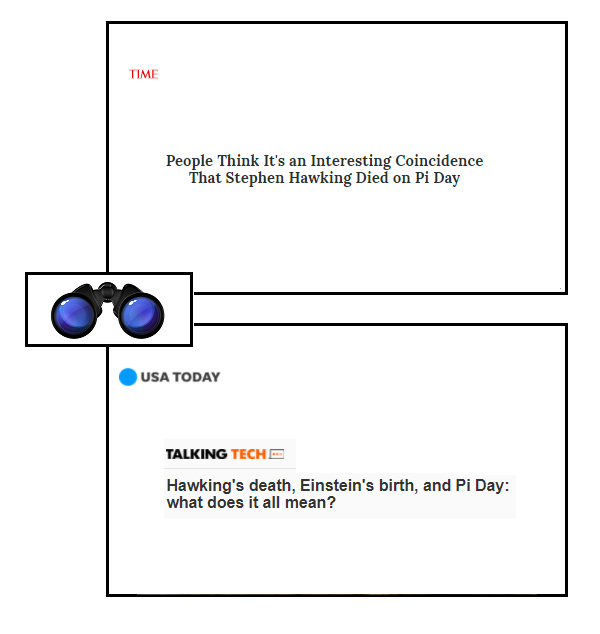Christchurch, NZ, The Great Replacement and a hail of bullets
Monday, March 18th, 2019[ by Charles Cameron — hold onto your Stetsons, New Zealand, massacre, tips from JM Berger and Clint Watts, sadness, anger, the 8chan ouroboros, more ]
.
On the left, the symbol which fronts the Christchurch mosques killer’s manifesto, The Great Replacement; note the black sun wheel in the center, and compare: on the right, the Nazi SS black sun or schwartze sonne. The SPLC’s Flags and Other Symbols Used By Far-Right Groups in Charlottesville page notes:
Schwarze Sonne (Black Sun), sometimes called the sonnerad: symbol has become synonymous with myriad far-right groups who traffic in neo-Nazi and/or neo-Volkisch ideologies. The symbol is based on the ancient sun wheel artifacts that were made and used by Norse and Germanic tribes as symbol of their pagan beliefs. Those sun wheels, made centuries upon centuries ago, do not usually resemble the complexity of this particular version. The version above is inlayed into the marble floor of the Castle Wewelsburg, the castle that Himmler made the spiritual and literal home of the SS during the reign of the Third Reich, and has significance within the occult practices of the SS.
Wikipedia’s page on the Great Replacement conspiracy theory notes:
The great replacement (French: le grand remplacement) is a right-wing conspiracy theory, which states that the white Catholic French population, and white Christian European population at large, is being systematically replaced with non-European people, specifically Middle Eastern, North and Sub-Saharan African populations, through mass migration and demographic growth. It associates the presence of Muslims in France with potential danger and destruction of French culture and civilization. [ .. ]
The theory has been popularized by Renaud Camus.
**
God I’m sorry.
**
News sources will have more details on the shootings, the shooter or shooters, the trial of Brenton Tarrant and so forth. My interest, posting here, will be in this act of cruel terrorism, in Tarrant‘s manifesto and its close relationship to Anders Breivik‘s manifesto, 2083, and whatever else emerges.
Is Islamophobia the issue here? The ideology of Branton Tarrant‘s manifesto is white supremacist, but the attacks themselves, the massacres, take place not on immigration centers, hut on two mosques — clearly identifying the spear-tip of Tarrant‘s rage.
Consider: Hatred, hatred, hatred, and prayer, prayer, prayer:
The Gurdwara (Sikh temple), Oak Creek, WI, 2012 Emanuel African Methodist Episcopal Church in Charleston, NC, 2015 The Tree of Life and New Light synagogues in Pittsburgh, PA, 2018 The Al Noor and Linwood Mosques in Christchurch, NZ, 2019
There’s context there.
**
On this most recent occasion I feel a mix of emotions:
The terrorist massacre of women, men and children in two places of Muslim worship on Friday, the Muslim day of prayer, is heartbreaking: my tears and prayers go out to the victims, their families and friends, and all in New Zealand, a small and notably peaceful country — my friend Walter Logeman, therapist and man of peace, lives in Christchurch, and my heart goes out to him this day, as it does to Marianne Elliott, known on Twitter as @zenpeacekeeper, and Leah Farrall, @allthingsct — see below.
In this moment of rage and hate, it is good to remember and praise the lives of those who untiringly promote peace and love.
So I feel sad, very sad, and grateful for my friends.
**
Meanwhile:
This, I’m afraid, makes me angry.
Australian Senator Blames Muslims for Terror Attack at New Zealand Mosque
Australian Senator Fraser Anning released a statement blaming “the immigration program which allowed Muslim fanatics to migrate to New Zealand in the first place” as “the real cause of bloodshed” following Friday’s shootings.
**
Tarrant’s manifesto :
The first thing to know about Tarrant‘s manifesto is that it is propaganda:
JM: The manifesto is — We treat these often as confessional documents, which are supposed to educate us about the person — but what it really is is a work of propaganda. And this one more than most.
We can tell from the manifesto that he’s a white supremacist, he’s anti-immigrant, he’s anti-Muslim, but when you try to drill down into the details,there’s not a lot of utility in the document. [ ..
One court appearance is probably going to be more illuminating nthan the document itself.
On the mix of immigration, racist and religionist issues:
Immigration and race are closely linked issues. Anti-immigration views allow white supremacists and people who have general right-wing views to incorporate a lot of different forms of hatred under one umbrella. It’s anti-Muslim, obviously, he targeted Muslims. It’s also racist as he describes it. Immigration is a convenient umbrella or fig-leaf for underlying bigotries that are more complex.
**
Having said that, let’s dig into the weeds, and take a look at one particular item in Tarrant‘s agenda, and that of Breivik. I’ll use the example of Constantinople, but Jerusalem and Vienna would have been other candidates..
Tarrant‘s manifesto includes a Q&A in which the imagined questioner asks:
Did/do you have ties to any other partisans/freedom fighters/ethno soldiers?
to which Tarrant responds:
I support many of those that take a stand against ethnic and cultural genocide. Luca Traini, Anders Breivik, Dylan Roof, Anton Lundin Pettersson, Darren Osbourne etc.
But I have only had brief contact with Knight Justiciar Breivik, receiving a blessing for my mission after contacting his brother knights.
That’s of particular since it mentions actual contact of some sort with Breivik , and also suggests there are in fact, as Breivik suggested, more Knights Justiciar besides (the self-proclaimed) Breivik himself.
We’ll return to that. The next question and response also mentions Breivik, and emphasizes his importance to Tarrant, whose 74-page manifesto was no boubt inspired by Breivik’s own manifesto of 1,515 pages:
Were your beliefs influenced by any other attackers?
I have read the writings of Dylan Roof and many others, but only really took true inspiration from Knight Justiciar Breivik.
**
Anders Breivik scans geopolitics and notes such things as Hindu nationalism in India as well as crusades and jihad, and one of his focuses within the latter pair of concerns is Anatolia, now known as Turkey — and within Turkey, Constantinople, now known, with the inclusion of largely residential areas on the Asian side of the Bosphorus, as Istanbul.
Breivik quotes a hadith of the Prophet:
Verily you shall conquer Constantinople. What a wonderful leader will he be, and what a wonderful army will that army be!
He refers to Constantinople as a gem of the Christian world:
Constantinople, the jewel of Eastern Christendom, finally fell in 1453 to the armies of Sultan Mahomet II.
He also terms it “the greatest Christian city in the world” and nites that the First Crusade was called by Pope Urban II “in response to an urgent plea for help from the Byzantine emperor in Constantinople”
Tarrant‘s manifesto is much shrter, though 77 pages is long enough to cram in a fair amount of detail, vitriol, and propaganda, including this section, in which he too writes of the Christian city of Constantinople:
To turks
You can live in peace in your own lands, and may no harm come to you.
On the east side of the Bosphorus.
But if you attempt to live in European lands, anywhere west of the Bosphorus. We will kill you and drive you roaches from our lands.
We are coming for Constantinople and we will destroy every mosque and minaret in the city.
The Hagia Sophia will be free of minarets and Constantinople will be rightfully christian owned once more.
**
Knights Justiciar?
As we have seen, Tarrant suggests there is in fact a community of Templar Knights of the sort that Breivik also claimed:
I have only had brief contact with Knight Justiciar Breivik, receiving a blessing for my mission after contacting his brother knights.
Breivik himself in his manifesto offers an open invitation to all those Europeamns who self-identify as Knights Justiciar:
Normally, any individual who decides he want to choose the road of the PCCTS (ie Knights Templar), a road of strength and honour, courage and martyrdom, should leave any other organisation for practical reasons (first and foremost in order to protect them). He will then spend a predefined time preparing himself mentally (this cannot be emphasised enough) as well as for planning the actual operation (planning, financing and eventually execution of the plan). This may take longer than 36 months depending on the nature of the assault.
Breivik also stated that the Knights Templar had been reconstituted as an order in 2002, with founding members of the following nationalities and observances:
English Protestant, English Christian atheist, French Catholic, German Christian atheist, Dutch Christian agnostic, Greek Orthodox, Russian Christian atheist, Norwegian Protestant, Serbian Orthodox, Swedish, Belgian, and European-American
That white supremacism may be, as Breivik either knew or fantasized and hoped, an international movement is suggested by the breadth of Tarrant‘s travels, financed by his “profits from investing in the cryptocurrency Bitconnect, in such places as North Korea, Poland, Ukraine, Iceland, and Argentina [details].
Breivik‘s own sense of Temoplar membership as he understands it is reported in his manifesto:
varies from 15-80 Justiciar Knights in Western Europe (2008 estimate)
And to the extent that he wishes his manifesto to foment other actions beyond his own assaults on Oslo and Utoya, Breivik has clearly been successful.
Thus JM Berger notes:
The Newtown shooter Adam Lanza reportedly collected news clippings on Breivik’s attack and other incidents of mass violence before he killed 20 children at the Sandy Hook Elementary School. Other young men, such as the British college student Liam Lyburd, have been inspired to plan or carry out mass shootings based on their admiration for Breivik’s lethality, rather than his beliefs.
More recently:
U.S. Coast Guard Lieutenant Christopher Hasson was charged with planning a mass-casualty attack modeled in significant part on Breivik’s strategy, and bearing the marks of his belief system.
And now, courtesy of an Australian, New Zealand.
**
Clint Watts and cascading terrorism:
.
Clint: If you look at Al-Qaida or ISIS, it starts as this central body, this network, and then it expands out and then they inspire their followers.In the West, it happens in reverse. Inspired followers start to network online, which build into this infrastructure.
We know this is getting more serious because the frequency and pace are picking up. When the pace picks up, that means that the network is tighter [ .. ] They’re citing each other ideologically, they’re playing to reach others’ attacks — and so this often does what I call cascading terrorism. It inspires others to begin acting.
**
**
Online presence:
Talk about the significance of the ouroboros!
Like a deeper layer of Hell, 8chan is an image board for anyone who is too much of an edgelord for 4chan. Created during the Gamergate fiasco when even the brass of 4chan decided that situation was getting out of hand and became a base of operations of sorts for the GG crowd.
**
Let us not forget President Donald Trump:
You know, the left plays a tougher game, it?s very funny. I actually think that the people on the right are tougher, but they don?t play it tougher. OK? I can tell you I have the support of the police, the support of the military, the support of the Bikers for Trump ? I have the tough people, but they don?t play it tough ? until they go to a certain point, and then it would be very bad, very bad. But the left plays it cuter and tougher. Like with all the nonsense that they do in Congress ? with all this invest[igations]?that?s all they want to do is ?you know, they do things that are nasty. Republicans never played this.
**
Okay, horrors:
For myself as a poet, one of the great but largely unremarked horros of Brenton Tarrant‘s manifesto is its epigrap=h, spelled out in full immediately after the title, Dylan Thomas‘ great poem Do Not Go Gentle into That Good Night — with emphasis on the final line:
Rage, rage against the dying of the light..
.
Listen to Dylan Thomas himself voice this, his final, trembling plea to his dying father:
God, that’s a breth of fresh air amidst all this hatred.
The poem is one of the finest in the English language: to see it thus dragged through the mire is shocking and saddening in the extreme.
**
Readings:
South China Morning Post, New Zealand shooting: 49 killed, more than 20 wounded Guardian, 49 shot dead in attack on two Christchurch mosques Guardian, Far-right ideology detailed in Christchurch shooting ‘manifesto’ Bellingcat, Shitposting, Inspirational Terrorism, and the Christchurch Mosque Massacre Wikipedia, The Great Replacement conspiracy theory SPLC, Flags and Other Symbols Used By Far-Right Groups NYT, Massacre Suspect Traveled the World but Lived on the Internet JM Berger, The Dangerous Spread of Extremist Manifestos Vice, how Facebook, Twitter and Youtube failed to keep gruesome video from going viral ProPublica, White Supremacist and Neo-Nazi Videos Take Stubborn Root on YouTube Breitbart, Trump Is ‘Encouraging’ Supporters to Assault People, Behave in a Dangerous Way












